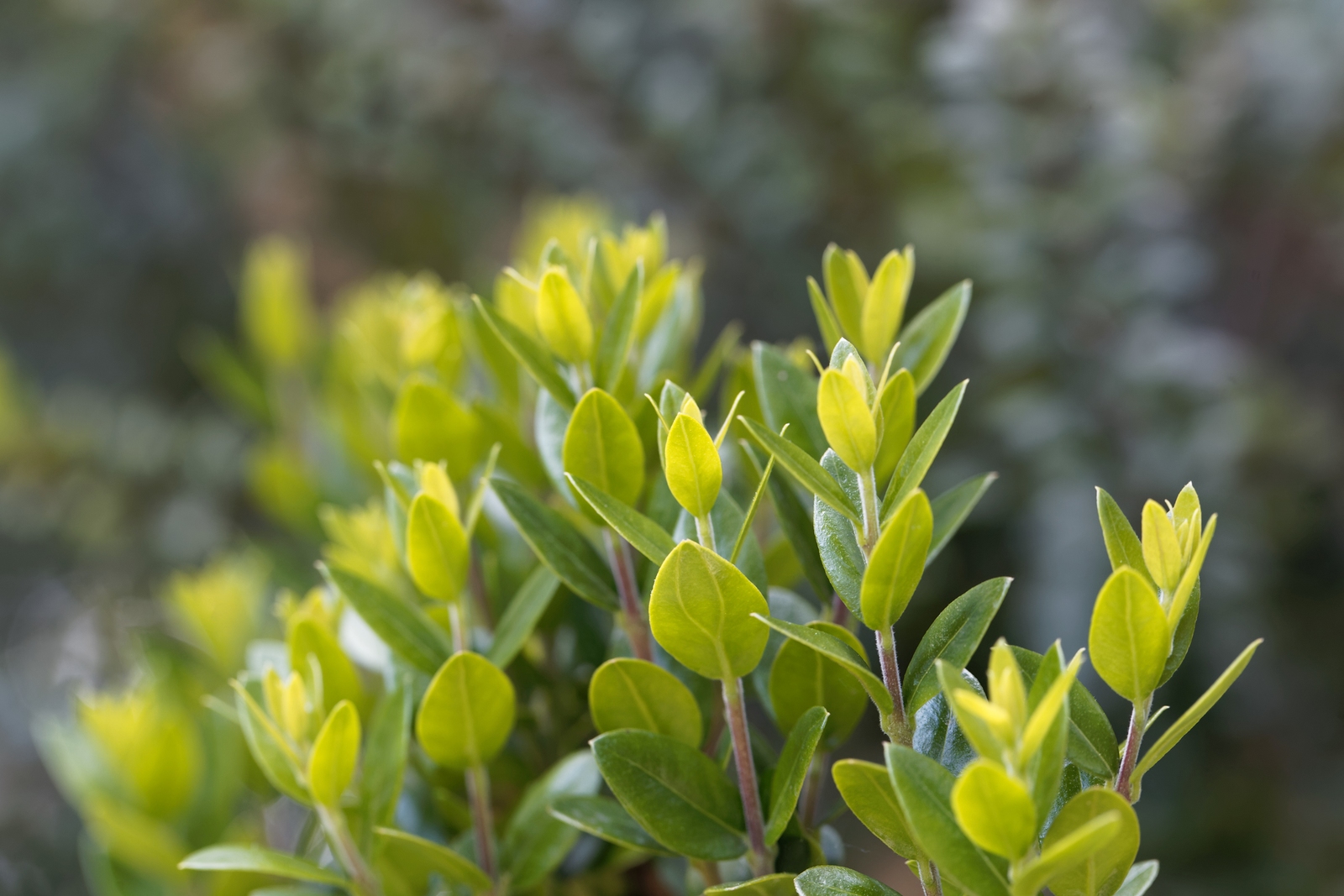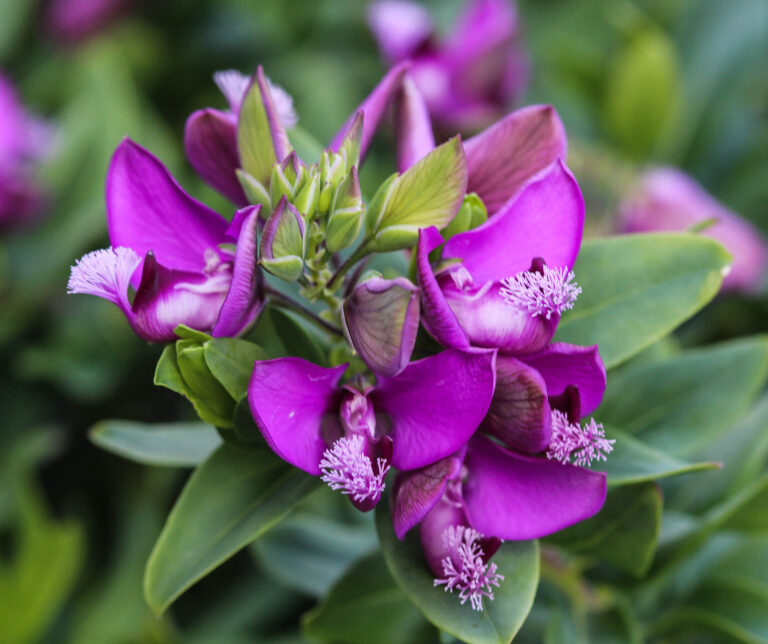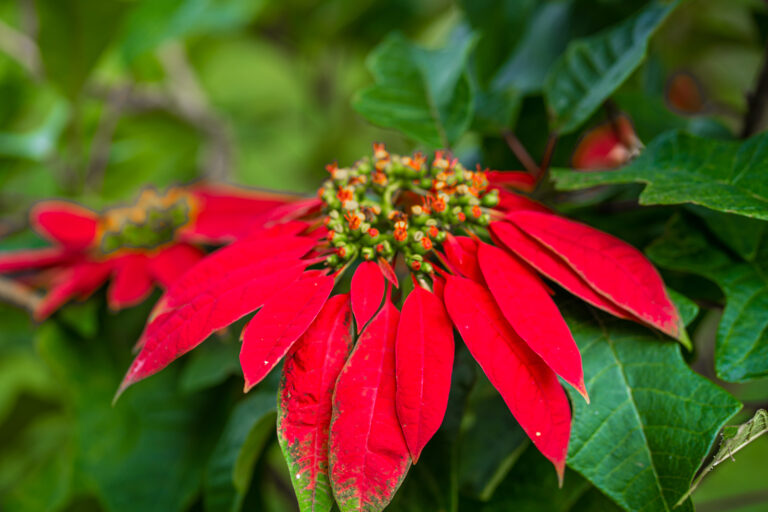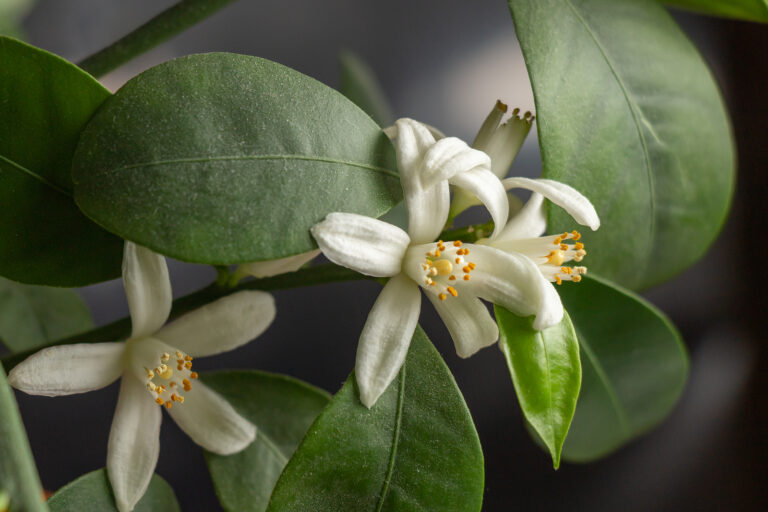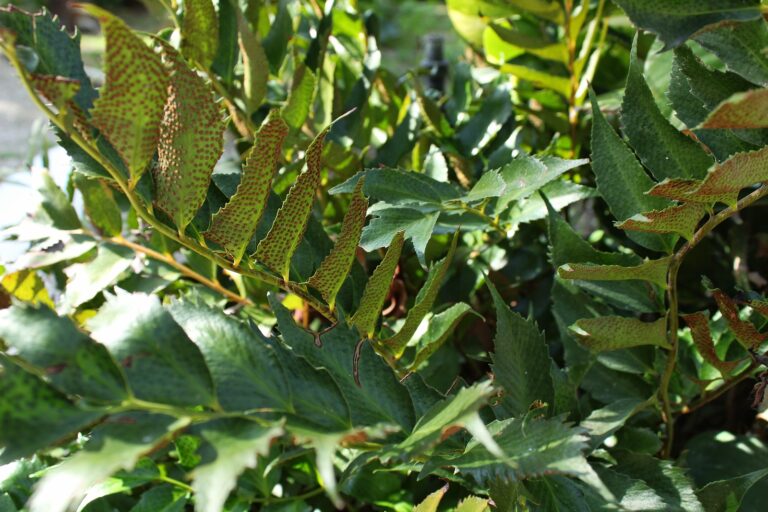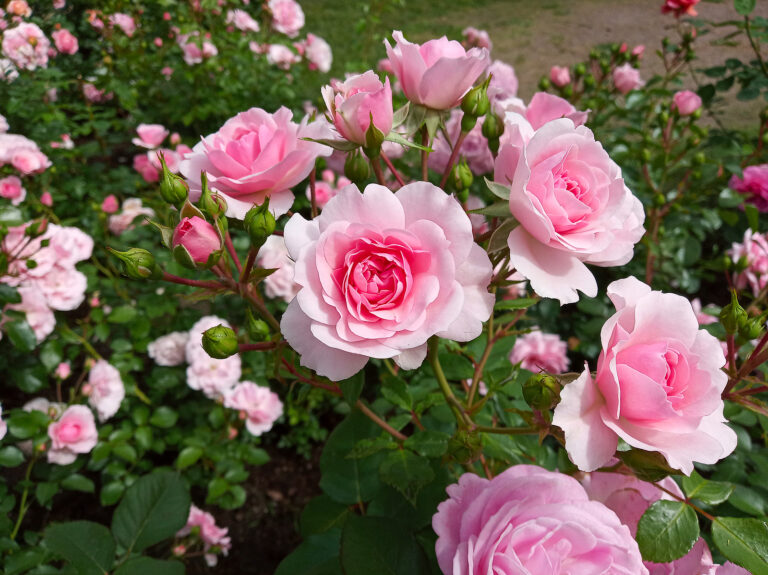How to Grow Myrtus – Myrtle
Members of the genus Myrtus–commonly called Myrtles–are upright and rounded evergreen shrubs and trees. They are grown for their aromatic leaves and their solitary, bowl-shaped, fragrant white flowers.
Myrtles can be grown in shrub borders, as topiaries, or as small houseplants. Myrtus can be grown as an informal hedge. They generally need long, hot summers to produce flowers.
Myrtus is a genus of two species. Myrtus species are native to the Mediterranean region and South America.
Get to know Myrtus
- Plant type: Evergreen shrub
- Growing Zones and range: 7-10
- Hardiness: Will tolerate fall and winter temperatures around 45°-50°F (7°-10°C)
- Height and width: Dense, upright, shrubby mounds with woody trunks grow to 16 feet (4.8m) tall, about 3’ as a houseplant
- Foliage: Small, boxwood-like, dark green, fragrant leaves
- Flowers: Small, orange-blossom-scented white flowers
- Bloom time: Spring to summer; blue-black berries in winter
- Uses: Informal hedge, growing against a sunny, warm wall, shrub border, houseplant
- Common name: Myrtle, Greek myrtle
- Botanical name: Myrtus communis
- Family name: Myrtaceae
- Origin: Mediterranean region, North Africa, South America, and the Falkland Islands
Where to plant Myrtus
- Plant myrtle in high to medium light
- Grow myrtle in humus-rich, well-drained soil; indoors grow myrtle in a soil-based mix.

When to plant Myrtus
- Set container-grown Myrtus in the garden in spring or autumn.
Planting and spacing Myrtus
- Space Myrtus about 3 feet (1m) apart or more.
How to water and feed Myrtus
- Keep the soil evenly moist for Myrtus.
- Fertilize Myrtus monthly in spring and summer; do not fertilize myrtle in fall or winter.
Myrtus care
- Myrtus tolerates pruning and is easily trained to topiary.
- Myrtus can be pruned to almost any shape, including espalier, topiary, or limbed up as a tree to expose the attractive branches.
- Repot Myrtus growing in containers as needed in spring; do not let container-grown plants become rootbound.
Myrtus pests and diseases
- Prone to mushroom root rot, gray mold, leaf spot, and southern blight.
- Mealybugs and scale can attack Myrtus; spray leaves with neem oil.
Myrtus propagation
- Take Myrtus cuttings from firm or part-ripe wood at any time or from seed.
- Sow seed in containers in a cold frame in autumn.
Myrtus varieties to grow
- Myrtus communis, Common myrtle, upright, bushy, evergreen shrub, arching with age, bearing opposite, ovate, glossy, dark green leaves, to 2 inches (5cm) long. From mid- to late summer or early autumn, produces somewhat fragrant, solitary, 5-petaled flowers, .75 inch (2cm) across, with conspicuous central tufts of white stamens; flowers are followed by oblong-ellipsoid, purple-black berries, .5 inch (1.5cm) long. To 10 feet (3m) tall and wide. Mediterranean.
- M. lechleriana, (Amomyrtus luma), upright, bushy shrub or many-stemmed tree with ovate, slightly aromatic, dark green leaves, to 1 inch (2.5cm) long, coppery-brown when young. Compact, axillary racemes of 4-10 fragrant, 5-petaled, creamy white flowers, .5 inch (1.5cm) across, are borne in mid- and late spring. These are followed by edible, spherical, aromatic red berries, ripening to black. To 20 feet (6m) tall or more and 12 feet (4m) wide. Chile.

